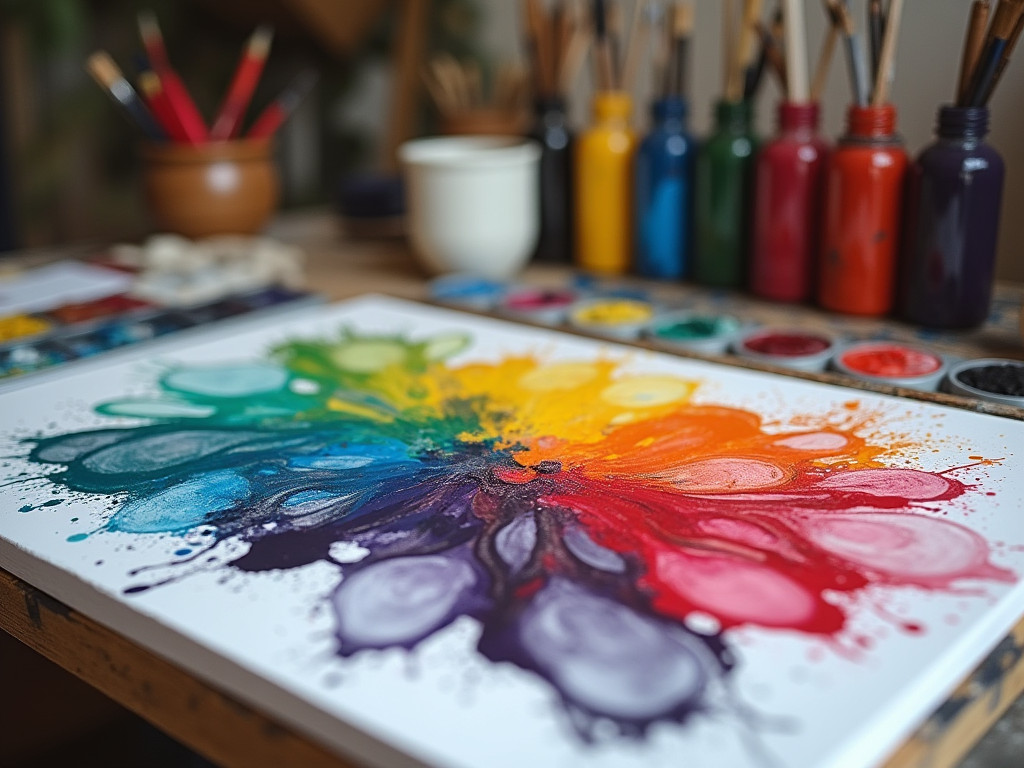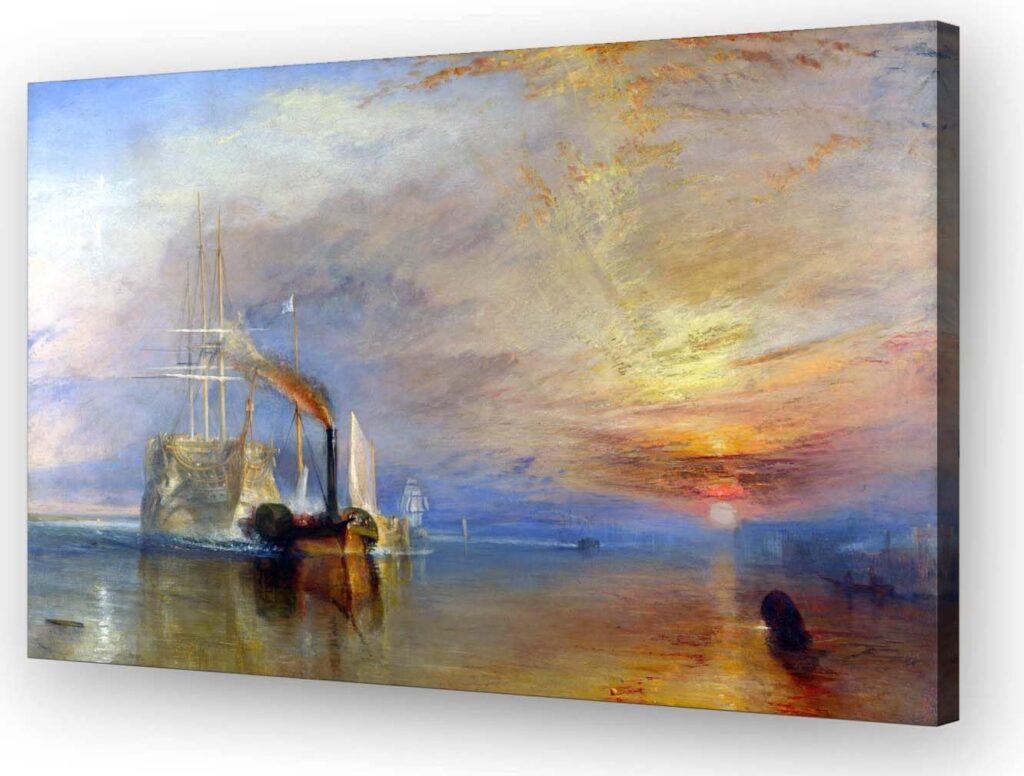Let’s talk about painting pigments – those magical particles that turn blank canvases into masterpieces. Whether you’re a painter trying to understand your materials or just curious about how color works, you’ve probably wondered what makes these tiny particles so special.
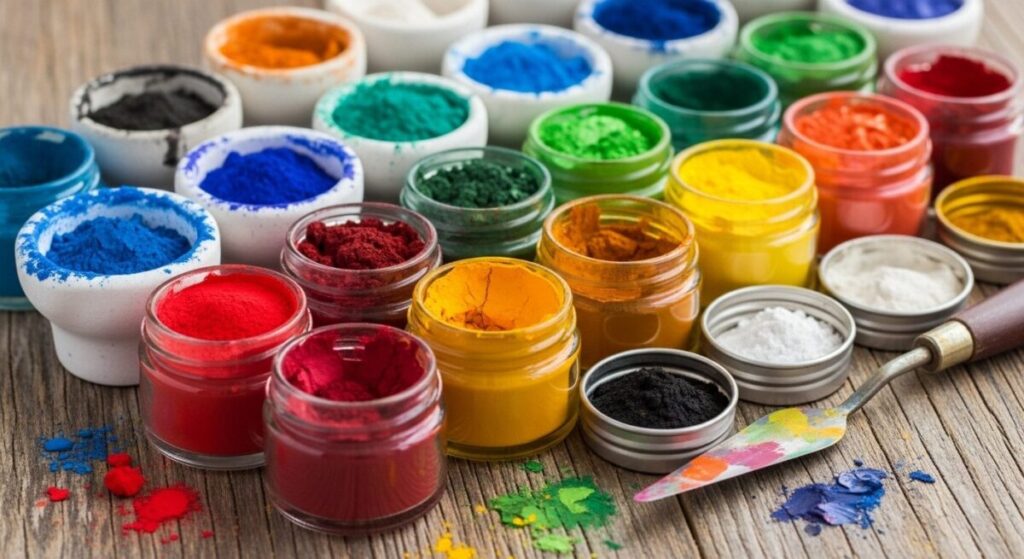
What Makes Painting Pigments Work?
Painting pigments are tiny color particles that mix with binders to create paint. Think of them like microscopic colored rocks – when light hits them, they absorb some colors and bounce others back to your eyes. That’s what creates the colors you see.
The magic happens when these particles suspend in a binder like oil or acrylic medium. Each pigment type brings its own personality to the party – some are bold and opaque, others subtle and transparent. Getting to know these characteristics makes you a better painter.
“Understanding pigments is like learning the alphabet of painting. Once you know how they work, you can write any story you want on canvas.”
Vincent van Gogh
Types of Painting Pigments You Should Know
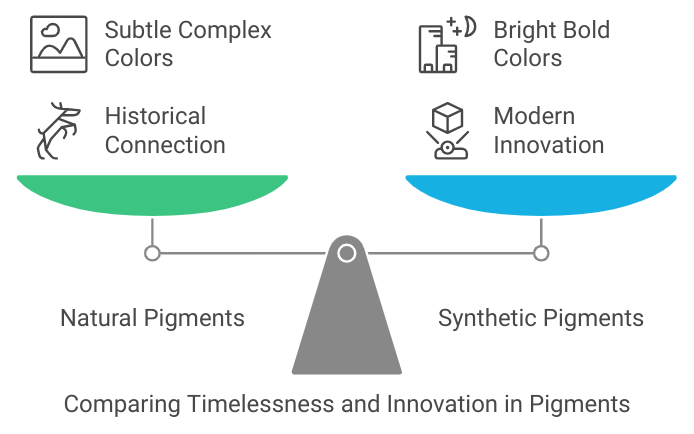
Natural Pigments
- Earth pigments: Ochre, sienna, umber – dug straight from the ground
- Mineral-based: Lapis lazuli, malachite – ground from precious stones
- Plant-based: Indigo, madder root – extracted from plants
- Animal-based: Cochineal red, bone black – from organic sources
What makes natural pigments special? They connect your work to thousands of years of art history. Cave painters used the same ochres you can buy today. Plus, they often have a subtle, complex color that synthetic pigments can’t match.
Synthetic Pigments
- Metal-based: Titanium white, cadmium red – made from processed metals
- Organic synthetics: Phthalocyanine blue, quinacridone violet – created in labs
- Modern innovations: Fluorescent pigments, pearlescent effects – pushing color boundaries
Synthetic pigments changed painting forever. They’re consistent, lightfast, and often more affordable than natural options. Many modern masterpieces wouldn’t exist without them.
“Color is the keyboard, the eyes are the harmonies, the soul is the piano with many strings. The artist is the hand that plays, touching one key or another, to cause vibrations in the soul.”
Wassily Kandinsky
Key Properties of Quality Painting Pigments
| Property | Why It Matters | Example |
|---|---|---|
| Lightfastness | Prevents fading over time | Ultramarine blue is extremely lightfast |
| Tinting strength | How much pigment you need | Phthalo blue has high tinting strength |
| Opacity | Coverage ability | Titanium white is very opaque |
| Particle size | Affects handling | Finer particles = smoother application |
| Permanence | Long-term stability | Some lakes fade quickly |
| Compatibility | Mixing behavior | Some pigments react badly together |
Practical Guide to Working with Pigments
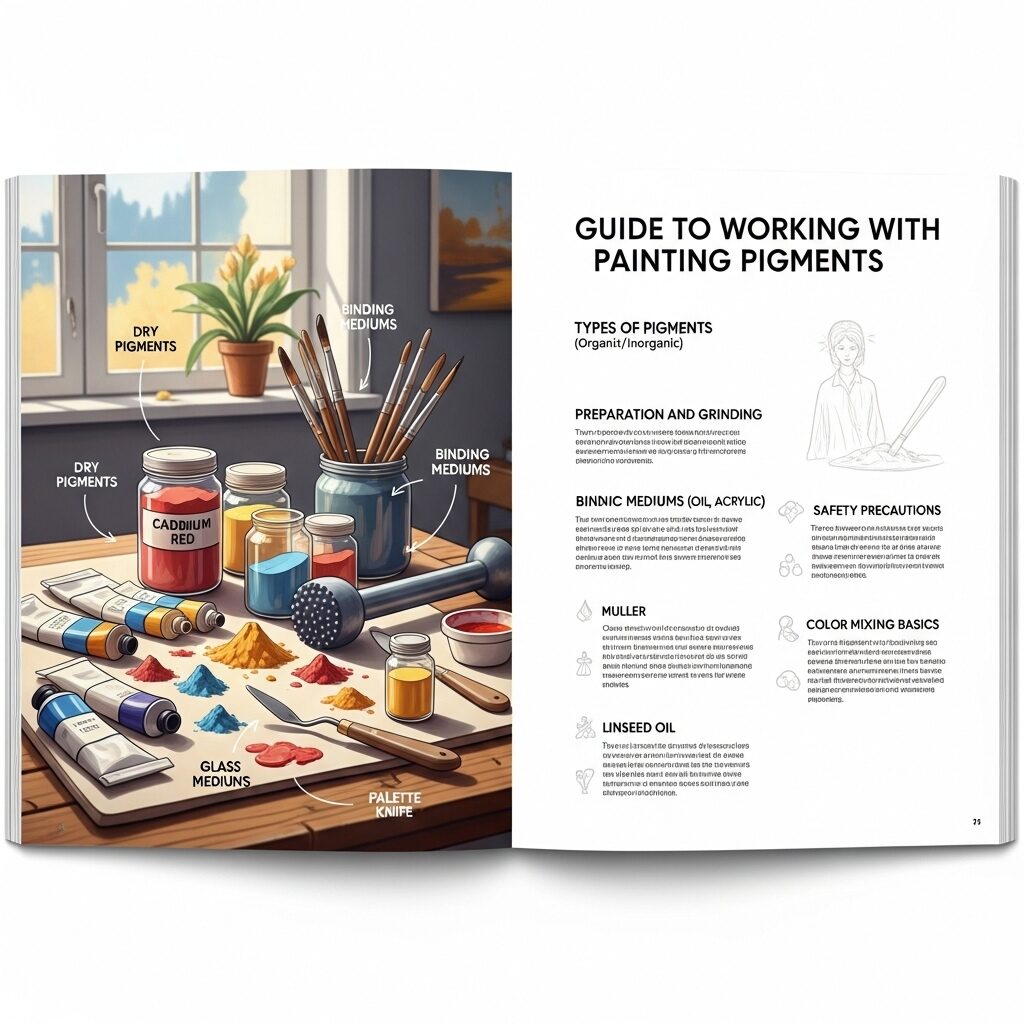
Mixing Basics
- Start with small amounts – you can always add more
- Test mixes on scrap paper first
- Keep track of your combinations
- Learn which pigments are transparent vs opaque
- Watch out for pigments that granulate
Safety Tips
- Work in well-ventilated areas
- Wear gloves with powder pigments
- Never eat or drink while handling pigments
- Label all mixtures clearly
- Research the safety of each pigment
Storage and Care
- Keep pigments away from direct sunlight
- Store in airtight containers
- Control temperature and humidity
- Label everything with date purchased
- Check regularly for changes in consistency
Common Problems and Solutions
Color Mixing Issues
Problem: Muddy colors when mixing
Solution: Learn which pigments are clean-mixing and stick to those for complex color combinations
Prevention: Make a mixing chart for your palette
Problem: Uneven coverage
Solution: Check if you’re using enough binder and if the pigment particle size matches your needs
Prevention: Test pigment-to-binder ratios before starting
Problem: Color shifts after drying
Solution: Test your mixtures and let them dry before committing to large areas
Prevention: Keep notes on how your pigments behave
Modern Innovations in Painting Pigments
The world of painting pigments keeps evolving. Recent developments include:
- Color-shifting pigments that change under different lights
- Eco-friendly alternatives to toxic traditional pigments
- Super-lightfast synthetic versions of natural pigments
- Nano-pigments for unusual optical effects
- Smart pigments that respond to temperature or pressure
- New ways to make historical pigments safer
- Biodegradable options for eco-conscious artists
Common Painting Pigments: A Comparative Look
This table highlights key characteristics of various pigments, from ancient earths to modern synthetics, showcasing their unique contributions to the world of art.
| Pigment Type | Origin | Typical Colors | Historical Significance | Fun Fact |
|---|---|---|---|---|
| Ochre (e.g., Yellow Ochre, Red Ochre) | Natural (Earth) | Yellows, reds, browns | One of the oldest pigments, used in prehistoric cave paintings worldwide. | Its color comes from iron oxides, which are essentially rust! |
| Ultramarine | Natural (Mineral: Lapis Lazuli) / Synthetic | Intense blue | Highly prized in the Renaissance, more expensive than gold; reserved for important figures like the Virgin Mary. | The synthetic version, “French Ultramarine,” was developed in the 19th century to make the color affordable. |
| Titanium White | Synthetic (Mineral) | Opaque white | Developed in the early 20th century, it largely replaced toxic lead white due to its superior opacity and non-toxicity. | It’s also used in sunscreens and food coloring due to its brightness and safety! |
| Cadmium Yellow/Red | Synthetic (Mineral) | Bright yellows, oranges, reds | Popularized in the 19th century for their vibrant, opaque, and lightfast qualities. | Cadmium pigments are known for their incredible brilliance, almost glowing on the canvas. |
| Indian Yellow | Natural (Animal/Vegetable) / Synthetic | Deep, warm yellow | Originally made from the urine of cows fed mango leaves in India; now produced synthetically. | The original production method was banned due to animal cruelty concerns, making the natural version a historical curiosity. |
| Phthalo Blue/Green (Phthalocyanine) | Synthetic (Organic) | Intense blues, greens | Introduced in the 1930s, these are extremely strong, lightfast, and staining pigments. | They are so powerful that a tiny amount can tint a large quantity of other colors! |
| Lamp Black | Synthetic (Carbon) | Deep black | One of the oldest artificial pigments, made from soot collected from burning oils or resins. | It’s essentially pure carbon, making it incredibly stable and permanent. |
Budget-Friendly Tips for Quality Results
- Buy fewer colors but better quality
- Learn to mix secondaries instead of buying them
- Start with essential pigments and expand slowly
- Share costs with other artists for bulk purchases
- Invest in proper storage to prevent waste
Environmental Considerations
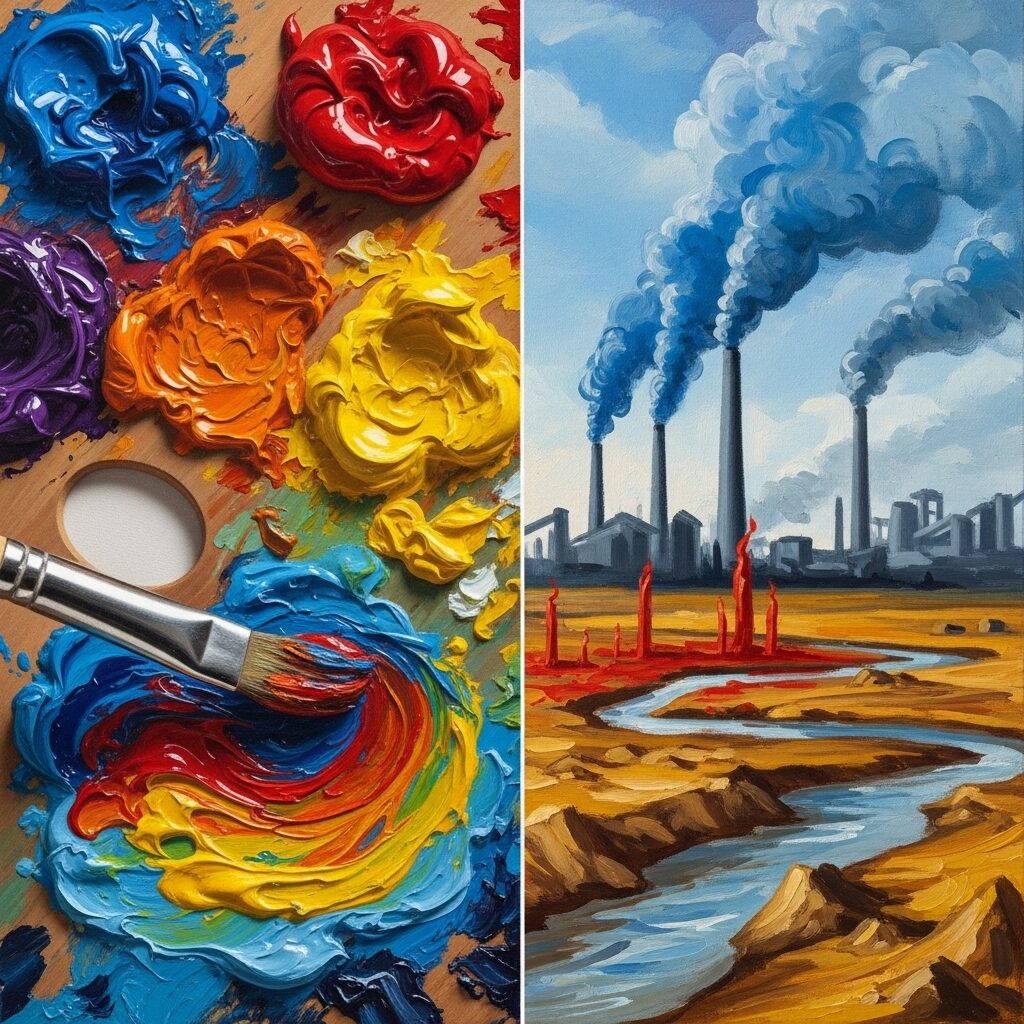
Environmental considerations in pigment production are increasingly vital. Historically, some natural pigments involved environmentally destructive mining practices or unsustainable harvesting. Synthetic pigments, while offering consistency, can lead to pollution from chemical manufacturing processes and waste disposal. The use of heavy metals like cadmium in pigments raises concerns about their toxicity and potential leaching into the environment. Artists and manufacturers are now focusing on developing and utilizing eco-friendly alternatives, such as plant-based pigments derived from sustainable sources, and non-toxic synthetic options. Responsible sourcing, reduced waste, and proper disposal methods are crucial steps towards minimizing the ecological footprint of painting pigments, ensuring both artistic expression and environmental stewardship.
FAQs About Painting Pigments
Q: Can I make my own painting pigments?
A: Yes! You can grind certain minerals or extract colors from plants, but be careful about safety and consistency.
Q: What’s the difference between pigments and dyes?
A: Pigments are particles that sit in the binder; dyes dissolve and stain the material they’re applied to.
Q: Are expensive pigments worth it?
A: Often yes – they usually offer better coverage, lightfastness, and mixing properties.
Q: How long do pigments last?
A: Quality pigments in proper storage can last decades or even centuries.
Q: Are natural pigments better than synthetic ones?
A: Not necessarily – modern synthetic pigments often outperform natural ones in stability and consistency.
Q: How do I choose between student and professional grade?
A: Consider your needs – student grade is fine for learning, but professional grade offers better performance.
Q: Can I mix different brands of pigments?
A: Usually yes, but check compatibility, especially with different binders.
Smart Shopping Tips for Painting Pigments

- Buy from trusted manufacturers who list their pigment codes
- Start with single-pigment paints for cleaner mixing
- Invest in quality versions of colors you use most
- Test new pigments before buying large quantities
- Consider lightfastness ratings for permanent work
- Read reviews from other artists
- Check the pigment load in different brands
Remember – painting pigments are the building blocks of your artwork. Whether you’re working with traditional earth colors or modern synthetics, understanding these tiny color particles helps you make better art.
Want to learn more about painting pigments? Try testing different pigments side by side. Nothing beats hands-on experience with these fascinating materials.
Ready to start experimenting with painting pigments? The world of color awaits – grab your palette and choose your first paint set.

